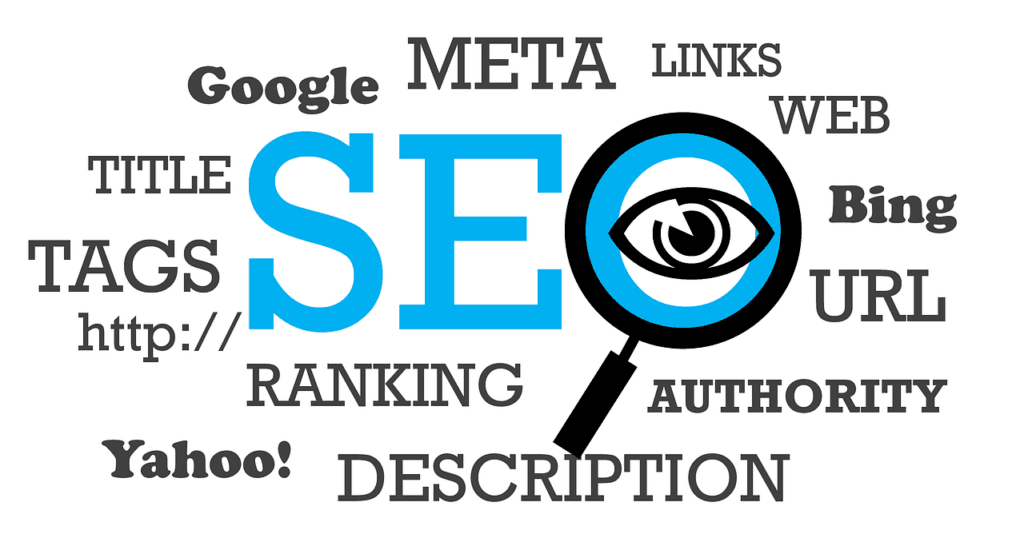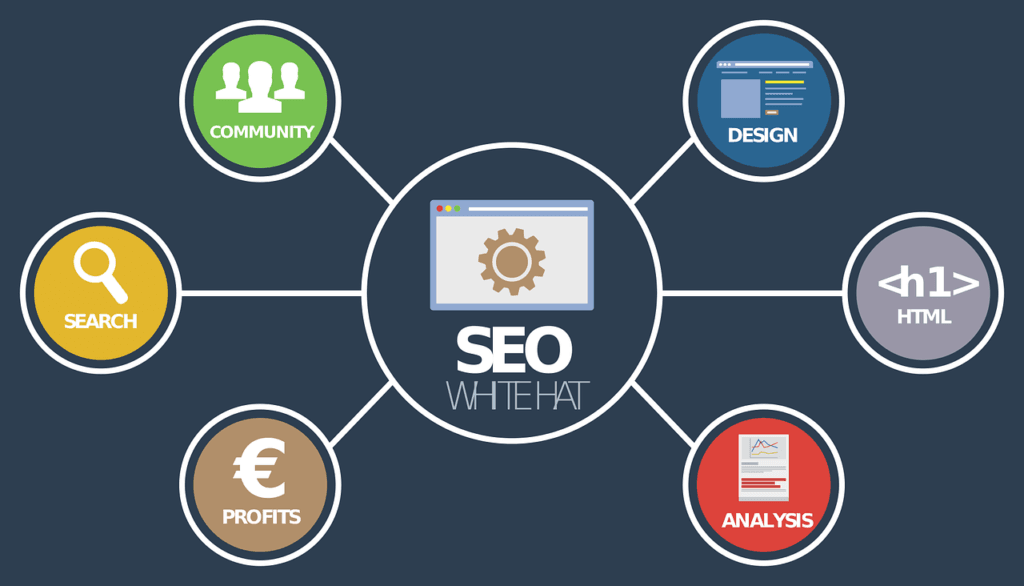(This Article has been revised, edited and added to, by Poulomi Chakraborty.)
In a world inundated with information, standing out as a wellness content creator can be quite the task. How do you ensure that your mindful and enriching content doesn’t get lost in the noise? The answer lies in leveraging SEO to its full potential. Here we delve deep into the world of SEO, carving a path that ensures your wellness content not only reaches your target audience but also helps you achieve financial zen.
Laying the Groundwork

Before you embark on the SEO journey for your wellness content, establishing a solid foundation is critical. This not only involves understanding your audience and leveraging analytics but also setting clear objectives, aligning your content with your brand’s core values, and ensuring technical SEO readiness.
Setting Clear Objectives
Define Your Unique Value Proposition (UVP)
Start by clearly defining what sets your wellness content apart. Your UVP should address specific wellness needs or gaps in the market that your content fulfills. This clarity will not only guide your SEO strategy but also ensure that your content resonates deeply with your target audience.
Identify Specific SEO Goals
Beyond broad objectives like “increase traffic,” set specific, measurable goals. This could be increasing organic traffic by a certain percentage, improving the ranking of specific keywords critical to your wellness niche, or boosting engagement metrics such as time on site or pages per session.
Aligning Content with Core Values
Authenticity in Wellness
In the wellness space, authenticity and trust are paramount. Ensure that every piece of content you create is not only optimized for search engines but also true to your brand’s core values and mission. This authentic alignment helps in building a loyal community around your brand.
Brand Voice Consistency
Maintain a consistent brand voice across all your content. Whether educational, inspirational, or conversational, your brand voice plays a crucial role in making your content stand out. Consistency in voice and tone contributes to brand recall and loyalty, enhancing the effectiveness of your SEO efforts by fostering higher engagement rates.
Technical SEO Readiness
Ensuring Website Health
Before diving deep into content creation and optimization, ensure your website’s technical health is optimal. This includes fast loading times, mobile responsiveness, secure connections (HTTPS), and an intuitive site structure. A healthy website forms the backbone of your SEO strategy, affecting both user experience and search engine rankings.
Schema Markup for Wellness Content
Utilize schema markup to help search engines better understand and index your content. For wellness sites, relevant schema types might include “ExercisePlan,” “HowTo,” “FAQPage,” or “Event.” Implementing schema markup can enhance your content’s appearance in search results, potentially increasing click-through rates.
Strategic Audience Engagement
Building Relationships with Your Audience
Engagement goes beyond mere content consumption. Encourage your audience to interact with your content through comments, social shares, and feedback. Responding to comments and fostering discussions can significantly enhance user engagement and loyalty, positively impacting your SEO by signaling content relevance to search engines.
Leveraging Engagement Data for Insights
Use engagement metrics as a treasure trove of insights into your audience’s preferences and behaviors. Analyze which content types and topics drive the most interaction and use this data to inform your future content creation and optimization strategies.
Laying the groundwork for your wellness content’s SEO journey involves more than understanding SEO basics. It requires a strategic approach that encompasses setting clear objectives, aligning content with your brand’s core values, ensuring technical SEO readiness, and actively engaging with your audience. By focusing on these foundational aspects, you’re not just optimizing for search engines; you’re building a resilient, authentic brand that resonates with your target audience and stands the test of time in the digital landscape.
Optimizing Your Content
To achieve financial zen through your wellness content, optimization is key. Beyond integrating keywords and crafting engaging narratives, there are several strategic layers to content optimization that can significantly elevate your content’s visibility and effectiveness.
Understanding Search Intent
Aligning Content with User Needs
Begin by deeply analyzing the search intent behind the keywords you target. Search intent refers to the why behind a search query—is the user looking to buy, to learn, or simply to find a website? Tailor your content to directly answer the needs and questions of your users. This alignment not only boosts SEO rankings but also enhances user satisfaction, leading to better engagement and conversion rates.
Segmenting Content Based on the Funnel
Recognize that your audience’s needs vary depending on where they are in the customer journey. Segment your content strategy to cater to different stages of the funnel—awareness, consideration, decision. For instance, leverage educational articles for awareness, detailed guides for consideration, and product comparisons or testimonials for decision stages.
Enhancing Readability and Accessibility
Structuring Content for Skim Readers
Most online readers skim through content. Structure your content in a way that makes it easy for skim readers to grasp the key points. Use subheadings, bullet points, and bold text to highlight important information. This not only improves user experience but also assists search engines in understanding the main topics of your content, potentially boosting your rankings.
Ensuring Content Accessibility
Make your content accessible to all users, including those with disabilities. Use alt text for images, provide transcripts for videos, and ensure your website is navigable with keyboard shortcuts. Accessibility improvements can broaden your audience and improve your site’s SEO, as search engines favor sites that provide a good user experience for all.
Leveraging Multimedia and Interactive Elements
Incorporating Varied Content Formats
Diversify your content by incorporating multimedia elements such as videos, podcasts, infographics, and interactive quizzes. This not only caters to different user preferences but also increases the time spent on your site—a positive signal to search engines. Furthermore, multimedia elements can be optimized for their own set of search queries, expanding your content’s reach.
Interactive Elements to Boost Engagement
Utilize interactive elements like quizzes, surveys, and calculators to engage your audience actively. These tools not only make your content more engaging but also provide valuable data about your audience’s preferences and behaviors, which can inform future content and marketing strategies.
Advanced Content Optimization Techniques
Semantic SEO
Beyond targeting specific keywords, focus on the broader topic and related terms. This approach, known as semantic SEO, involves optimizing content to cover a topic comprehensively. By including related terms, synonyms, and answering related questions, your content can rank for a wider range of queries, attracting more diverse traffic.
E-A-T Principles for Wellness Content
Given the wellness sector’s impact on users’ health and wellbeing, Google’s E-A-T (Expertise, Authoritativeness, Trustworthiness) principles are crucial. Ensure your content is created or reviewed by qualified professionals, cite reputable sources, and provide clear author bios. Demonstrating E-A-T can significantly influence your content’s ranking, especially for YMYL (Your Money Your Life) topics.
Optimizing your wellness content for SEO involves a meticulous blend of strategies that extend beyond keywords and meta tags. By understanding search intent, enhancing readability and accessibility, leveraging multimedia, and adhering to advanced SEO practices like semantic SEO and E-A-T principles, you can craft content that not only ranks well but also truly resonates with your target audience. This strategic approach sets the foundation for building a strong, engaging, and trusted brand in the wellness industry.
Off-Page SEO Strategies

Delving into the realm of off-page SEO offers a myriad of opportunities to elevate your wellness content’s visibility and authority. Beyond the foundational strategies of building quality backlinks and guest blogging, a nuanced approach involves nurturing your digital ecosystem, leveraging the symbiosis between various online entities, and tapping into the power of community and reputation management.
Expanding Your Digital Ecosystem
Cultivating Brand Advocates
In the wellness industry, trust and personal experiences are paramount. Encourage satisfied customers, clients, or readers to become brand advocates. Their testimonials, reviews, and shared content can serve as powerful endorsements, significantly amplifying your content’s reach and credibility. Engage with these advocates by acknowledging their contributions and incentivizing their continued support through loyalty programs or exclusive content.
Strategic Partnerships with Complementary Brands
Identify and collaborate with brands that offer complementary products or services in the wellness space. These partnerships can lead to co-created content, cross-promotions, or event sponsorships, introducing your content to a broader, yet highly relevant, audience. Such collaborations not only extend your reach but also associate your brand with other trusted entities, enhancing perceived authority.
Leveraging the Power of Social Proof
Utilizing Reviews and Testimonials
Incorporate reviews and testimonials not just on your own platform but also on external sites relevant to your niche. Platforms like Google My Business, Yelp, and industry-specific review sites can significantly influence potential customers’ perceptions and decisions. Proactively manage your presence on these platforms, responding to reviews and engaging with your community.
Showcasing Achievements and Certifications
Highlight any certifications, awards, or recognitions your brand or personnel have received within the wellness industry. Whether it’s a certification from a recognized health organization or an award for innovative wellness content, these accolades serve as badges of trust and expertise. Feature these achievements prominently on your website and across social media channels.
Building and Engaging with Your Community
Creating Value-driven Engagement Platforms
Build platforms such as forums, social media groups, or Q&A sessions where your audience can engage not just with your brand but also with each other. These platforms should be places of value exchange, where members can share experiences, ask for advice, and discuss wellness topics. Facilitating these discussions not only strengthens your community but also enhances your brand’s role as a thought leader in the wellness space.
Hosting and Participating in Events
Organize or participate in events, workshops, or webinars that cater to your target audience’s interests and needs. These can be both physical and virtual events. Use these opportunities to showcase your expertise, engage with your audience in real-time, and provide actionable wellness insights. Events are also an excellent way to generate buzz and encourage social sharing, further amplifying your content’s reach.
Reputation Management
Monitoring Your Brand’s Online Presence
Regularly monitor what’s being said about your brand online. Tools like Google Alerts, Social Mention, and Brand24 can provide insights into your brand’s reputation across the web. Address negative feedback promptly and constructively, while amplifying positive mentions. This proactive approach not only mitigates potential damage but also demonstrates your commitment to customer satisfaction and trust.
Influencing the Narrative with Content
Create and distribute content that positively influences your brand’s narrative. This could be success stories, case studies, or research findings that highlight your brand’s contributions to wellness. By controlling the narrative, you ensure that potential customers find content that reinforces your brand’s authority and credibility.
Mastering the Art of Digital Storytelling
Telling Your Brand’s Story
In a crowded market, your brand’s story can be a significant differentiator. Craft and share the story of your brand’s inception, mission, and impact on wellness. Use storytelling to connect on an emotional level, making your brand more relatable and memorable. This narrative should be consistent across all off-page SEO efforts, from social media posts to guest articles, reinforcing your brand’s identity and values.
Leveraging User-Generated Content
Encourage your community to share their own stories and experiences related to your brand or wellness journey. User-generated content not only provides authentic perspectives but also significantly increases your content volume without direct resource investment. Showcase these stories through your channels, highlighting the real-world impact of your brand on individuals’ lives.
Strategic Content Distribution
Identifying and Utilizing Niche Platforms
For wellness content creators, it’s essential to go beyond the mainstream social media platforms and identify niche communities and forums where your target audience congregates. Platforms dedicated to specific wellness interests or challenges can offer a highly engaged audience for your content. Tailor your content to fit the norms and expectations of these communities, ensuring it adds value and fosters positive engagement.

Related: Check out our free SEO suite

Advanced SEO Tactics
Embarking on advanced SEO tactics propels wellness content creators beyond conventional strategies, tapping into the vast potential of innovative and technical methodologies. This approach encompasses a diverse range of tactics designed to optimize your digital presence, ensuring your content not only ranks well but also delivers a superior user experience, fosters engagement, and builds authority in the wellness niche.
Enhancing User Experience (UX) for SEO
Prioritizing Page Experience Signals
Google’s emphasis on page experience as a ranking factor underscores the importance of ensuring your website excels in usability. This encompasses loading speed, interactivity, visual stability, mobile-friendliness, and safe browsing. By focusing on these aspects, you not only improve your SEO but also significantly enhance the user experience, leading to increased engagement and conversion rates.
Implementing Progressive Web App (PWA) Features
Consider transforming your website into a Progressive Web App (PWA) to offer users a fast, engaging, and reliable experience, akin to that of a native app. PWAs are particularly effective in improving load times, offline accessibility, and device compatibility, which can positively impact your SEO performance by providing a seamless user experience.
Strategic Content Syndication
Leveraging Syndication for Wider Reach
Content syndication, when strategically executed, can amplify your content’s visibility without incurring penalties for duplicate content. Partner with reputable sites within the wellness industry to republish your top-performing content. This tactic not only exposes your content to a broader audience but also can generate valuable backlinks, enhancing your site’s authority.
Managing Canonical Tags
To ensure search engines correctly identify the original source of the syndicated content, employ canonical tags. These tags communicate to search engines which version of the content is the “master” or original, preventing issues of content duplication that can dilute your SEO efforts.
Integrating Voice and Visual Search Optimization
Optimizing for Voice Search Queries
As voice search becomes increasingly prevalent, optimizing for natural language queries is essential. Incorporate long-tail keywords that mirror how people speak in real-life conversations into your content. Additionally, structure content to directly answer common questions, making it more likely to be featured in voice search results.
Capitalizing on Visual Search Capabilities
With the rise of visual search technology, ensuring your images are optimized for search engines can open up new avenues for visibility. Use descriptive, keyword-rich file names and alt text for all images. Consider investing in high-quality, unique images that can stand out in visual search results, further driving traffic to your site.
Exploiting the Potential of Data Analytics and AI
Harnessing AI for Content Optimization
Artificial intelligence (AI) offers unparalleled capabilities in analyzing content performance and user behavior. Use AI tools to uncover insights into which content types and topics resonate most with your audience, informing your content strategy with data-driven decisions. Additionally, AI can help optimize content for search engines in real-time, adjusting strategies based on current trends and algorithm changes.
Predictive Analytics for Trend Forecasting
Employ predictive analytics to anticipate future trends and interests within the wellness industry. This forward-looking approach enables you to create content that addresses emerging topics before they become saturated, positioning your brand as a thought leader and gaining an edge in search engine rankings.
Building a Robust Local SEO Strategy
Enhancing Local Visibility Through Niche Directories
For wellness businesses with a local presence, listing your site on niche directories specific to the wellness industry can boost local SEO efforts. These directories often have high domain authority and can drive targeted traffic to your site, in addition to providing valuable backlinks.
Optimizing for ‘Near Me’ Searches
With the prevalence of mobile searches, ‘near me’ queries have become increasingly common. Ensure your content and metadata include local keywords and phrases that potential customers might use when searching for wellness services in their vicinity. Additionally, make sure your business’s NAP (Name, Address, Phone number) information is consistent across all platforms to enhance local search visibility.
Utilizing Blockchain Technology for SEO
Exploring the Impact of Blockchain on SEO
Blockchain technology has the potential to revolutionize how content authenticity and ownership are verified online. By leveraging blockchain to certify your original content, you can protect against plagiarism and unauthorized use, enhancing the trustworthiness and credibility of your brand in the eyes of both users and search engines.
Enhancing Data Security and Privacy
In an era where data privacy concerns are paramount, implementing blockchain technology can offer users enhanced security and privacy protections. This not only builds trust with your audience but can also positively influence your site’s reputation and, by extension, its SEO performance.
Futuristic SEO Strategies

As the digital landscape continuously evolves, staying ahead in the SEO game necessitates not only keeping pace with current trends but also anticipating and adapting to the future of search engine optimization. For wellness content creators, leveraging futuristic SEO strategies can set your content apart, ensuring it meets the demands of tomorrow’s users and search algorithms alike.
Embracing the Era of Semantic Search
Advancing Beyond Keywords to Concepts
With the advent of semantic search, search engines are becoming increasingly adept at understanding the context and intent behind queries. This shift requires a move beyond traditional keyword optimization to a focus on comprehensive content that addresses entire concepts. Create content that covers topics in depth, providing value that answers not just specific queries but also related questions and topics that users might not have explicitly searched for.
Structuring Content for Topic Clusters
Adopt a structured approach to content creation by organizing your content into topic clusters. This strategy involves selecting broad topics related to your wellness niche and creating a series of interconnected pieces that cover various aspects of these topics. By linking these pieces together, you signal to search engines the breadth and depth of your content, enhancing your authority on the subject and improving your search visibility.
Integrating Emerging Technologies
Leveraging AI for Personalized User Experiences
Artificial Intelligence (AI) is transforming the way content is discovered, consumed, and interacted with. Implement AI-driven solutions to personalize the user experience on your site, such as personalized content recommendations or AI-powered chatbots that provide instant answers to user queries. Personalization not only improves user engagement but can also increase the likelihood of your content meeting the specific needs and interests of each visitor, enhancing its SEO value.
Exploring the Potential of Blockchain in SEO
Blockchain technology holds promise for enhancing transparency and security in digital transactions and interactions. In the context of SEO, blockchain could be used to verify the authenticity of content, combat plagiarism, and even manage the digital rights of content creators. While the direct impact of blockchain on SEO is still emerging, staying informed about this technology and considering its future applications can position your brand as an innovator.
Harnessing the Power of Voice and Visual Searches
Optimizing for Voice-Activated Queries
As voice search continues to grow, optimizing your content for voice-activated queries is essential. This involves adopting a conversational tone and including long-tail keywords that mirror natural speech patterns. Focus on creating content that answers questions directly and succinctly, as this is often the format preferred by voice search algorithms.
Capitalizing on Visual Search Technology
Visual search technology allows users to search using images instead of words, opening up new avenues for content discovery. Optimize your images with detailed, accurate alt text, and consider using high-quality, original images that could be recognized by visual search engines. Additionally, explore the integration of visual search capabilities on your platform, making it easier for users to find your content through image-based queries.
Preparing for the Next Generation of Internet Users
Adapting Content for Augmented Reality (AR) and Virtual Reality (VR)
As AR and VR technologies become more mainstream, they offer unique opportunities for creating immersive content experiences. For wellness brands, this could mean developing virtual wellness workshops, guided meditation sessions in VR, or AR experiences that guide users through fitness exercises. These immersive experiences can significantly enhance user engagement and open up new content discovery pathways.
Understanding the Impact of 5G on Content Consumption
The rollout of 5G technology is set to revolutionize how quickly and smoothly content can be accessed and consumed. This advancement in internet speed and reliability will likely increase users’ expectations for instant access to high-quality, interactive content. Prepare for this shift by optimizing your content and platforms for speed and interactivity, ensuring they can leverage the full potential of 5G technology.
Navigating the Complexities of International SEO
Mastering Multilingual and Multiregional SEO
As the internet continues to bring global audiences closer, optimizing your content for international users becomes increasingly important. This involves implementing hreflang tags to direct users to the version of your site most relevant to their language and region, as well as localizing content to reflect cultural nuances and search behaviors. Understanding and navigating the complexities of international SEO can open up your wellness content to a global audience, significantly expanding its reach and impact.
Creating Your SEO Master Plan

Crafting an SEO master plan is akin to drafting a map for a treasure hunt. In the vast and ever-changing landscape of digital marketing, a well-thought-out SEO strategy is not just a pathway to visibility; it’s a blueprint for building meaningful connections with your audience and establishing your authority in the wellness sector. This comprehensive approach requires a fusion of creativity, analytics, and adaptability, ensuring that your content not only reaches its intended audience but also inspires action and loyalty.
Establishing a Solid SEO Framework
Setting Realistic and Measurable Goals
The cornerstone of any effective SEO strategy is the establishment of clear, achievable, and measurable goals. These objectives should not only focus on increasing traffic but also on converting that traffic into engaged users and customers. Whether it’s improving the time spent on your site, decreasing bounce rates, or increasing subscription sign-ups, your goals should reflect the specific needs and challenges of your wellness brand.
Conducting Comprehensive Competitor Analysis
Understanding the competitive landscape is crucial for carving out your niche in the wellness sector. Analyze your competitors’ online presence, from their keyword strategy to their content approach and backlink profile. Identify gaps in their strategies where your content can excel and opportunities for differentiation that can set your brand apart. This analysis will guide your content creation, keyword selection, and promotional strategies, ensuring they are finely tuned to give you a competitive edge.
Integrating SEO with Content Marketing
Developing a Content Calendar Aligned with SEO Objectives
Create a dynamic content calendar that aligns with your SEO goals and audience’s interests. This calendar should not only outline topics and publishing schedules but also incorporate key SEO elements like targeted keywords, content format (blog post, video, infographic), and promotional tactics. A well-planned content calendar ensures consistent content production, which is pivotal for maintaining and improving your SEO rankings.
Emphasizing Quality and Value in Content Creation
In the realm of SEO, quality trumps quantity. Each piece of content should offer real value to your audience, addressing their needs, questions, and interests with depth and expertise. High-quality content is more likely to earn backlinks, shares, and engagement, all of which are positive signals to search engines. Invest in thorough research, expert insights, and compelling storytelling to make your content stand out.
Leveraging Analytics for Continuous Improvement
Utilizing SEO and Analytics Tools for Insightful Reporting
To navigate the complexities of SEO, equip yourself with a suite of analytics and SEO tools. Platforms like Google Analytics, Ahrefs, SEMrush, and Moz provide valuable insights into your website’s performance, from traffic and engagement metrics to keyword rankings and backlink profiles. Regularly reviewing these metrics allows you to understand the impact of your SEO efforts and identify areas for optimization.
Establishing a Feedback Loop for SEO Refinement
Incorporate a structured process for collecting and analyzing feedback from various sources, including user behavior on your site, feedback from social media, and SEO performance data. This feedback loop is essential for identifying what works and what doesn’t, allowing you to refine your SEO strategy continuously. Be open to experimenting with new tactics, and don’t be afraid to pivot your approach based on what the data tells you.
Prioritizing User Experience Across All SEO Efforts
Ensuring Mobile-Friendliness and Site Speed Optimization
With the increasing predominance of mobile searches, ensuring your website is mobile-friendly and loads quickly is non-negotiable. Use Google’s mobile-friendly test and PageSpeed Insights tool to identify and address any issues that could be hindering your site’s performance. A seamless user experience on both desktop and mobile devices is crucial for retaining users and improving your SEO rankings.
Enhancing Site Navigation and Internal Linking Structure
A well-organized site structure and intuitive navigation facilitate not only a better user experience but also easier crawling by search engines. Ensure your site’s architecture is logical and straightforward, with a robust internal linking strategy that guides users through your content while distributing page authority throughout your site. Strategic internal linking keeps users engaged longer, reducing bounce rates and increasing the likelihood of conversion.
Adapting to Algorithm Changes and Industry Trends

Staying Informed on SEO Best Practices and Algorithm Updates
The SEO landscape is continually evolving, with frequent updates to search engine algorithms and shifts in user behavior. Stay abreast of these changes by following reputable SEO news sources, attending industry conferences, and participating in online forums. Adapting your strategy in response to these changes is crucial for maintaining and improving your SEO performance.
Conclusion – Setting Sail on Your SEO Journey
As we embark on the culmination of our SEO journey tailored for wellness content creators, it’s essential to recognize the voyage ahead as one of continuous discovery and adaptation. The landscape of digital wellness is as dynamic as it is vast, with new challenges and opportunities emerging with every technological advancement and cultural shift. Armed with a comprehensive SEO strategy, you’re not just navigating the present but charting a course for future success. This journey demands resilience, creativity, and an unwavering commitment to your audience’s well-being and satisfaction.
As you implement the strategies discussed, remember that SEO is not a one-time effort but a perpetual cycle of learning, optimizing, and growing. Your passion for wellness, combined with a strategic approach to SEO, will not only elevate your content in search rankings but also help forge deeper, more meaningful connections with your audience. Embrace the journey with optimism and purpose, and let your unique voice and valuable content light the way for those seeking guidance on their wellness journey.
Read next
- How to Set Up Conversion Tracking for Booking Engines
- Interactive Content Can Skyrocket Your Lead Capture. We Show How!
- How to Utilize Dynamic Content in Email Campaigns
- What is a SMART Plan? And, Why You Need One
- How AI LLMs will Revolutionize SEO (in 2023): Our Insights!




















Comments are closed.